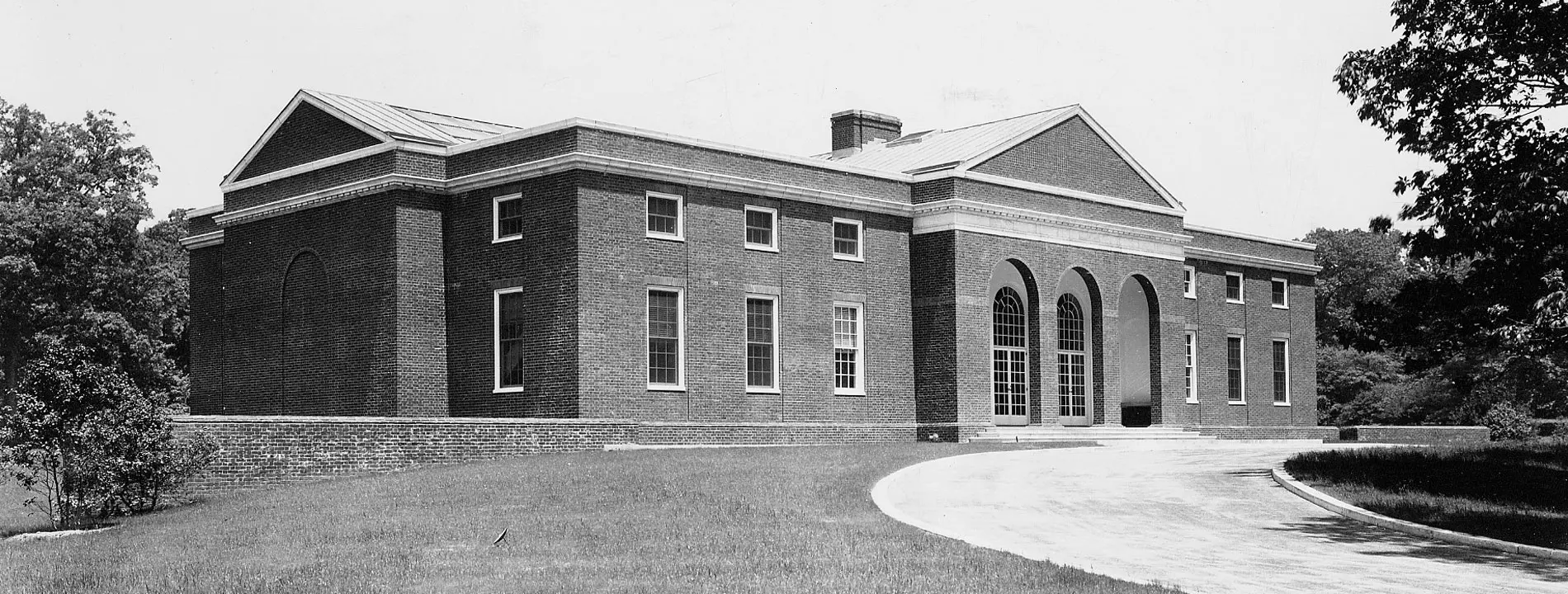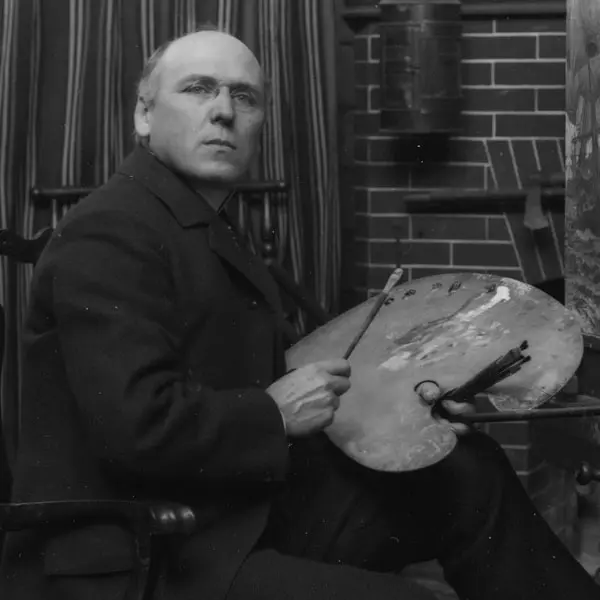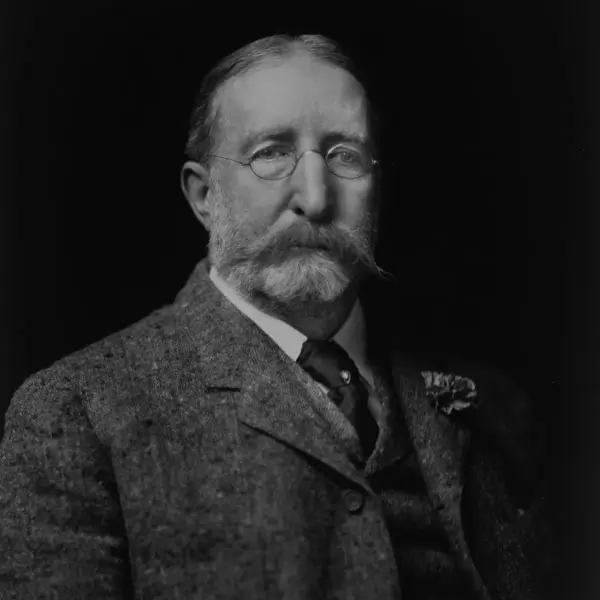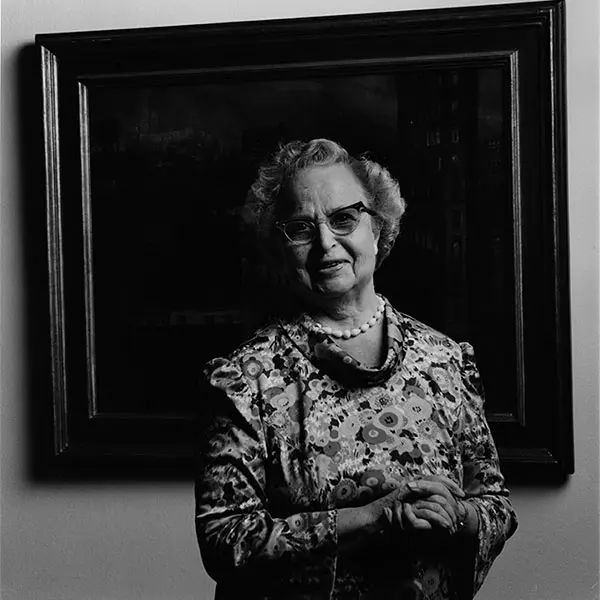Museum History
A SMALL CIRCLE OF FRIENDS: THE BEGINNING OF THE DELAWARE ART MUSEUM
A cold gray evening in the early winter of 1912 saw the gathering of a small, diverse group of Delaware residents. Some were artists; others were the entrepreneurs and businessmen and women of Wilmington; all were good friends of Howard Pyle, the famous American illustrator.
Pyle died unexpectedly in November 1911 while on a trip to Italy with his family. He was only 58. Pyle, who was one of the most sought after illustrators in the country, opened an art school at his home studio, which put Wilmington, Delaware, on the artistic map. Among his most notable students were N. C. Wyeth, Frank E. Schoonover, Elenore Abbott, Ethel Franklin Betts, and Anna Whelan Betts.
Pyle’s friends formed the Wilmington Society of the Fine Arts with the goal of preserving and exhibiting his work. Donations from generous local patrons enabled the Society to purchase nearly 100 of Pyle’s works of art—these paintings, drawings, and prints formed the foundation of a collection that would soon include paintings from some of the most talented illustrators in America.
When the charter of the Society was drawn in 1912, it boasted the signatures of such Delaware luminaries as Louisa du Pont Copeland and illustrators Stanley M. Arthurs and Frank Schoonover. More importantly, it stated a broad vision for the future: “to promote the knowledge and enjoyment of and cultivation in the fine arts in the State of Delaware.”
AN EXTRAORDINARY GIFT: A COLLECTION FINDS A HOME
Samuel Bancroft, Jr. (1840 – 1915), a Wilmington textile mill owner, was “shocked with delight” upon viewing his first Pre-Raphaelite painting in 1880. Born to a Quaker family with strong English connections, Bancroft’s decision to collect Pre-Raphaelite art was highly unusual, both within the local community and in the United States as a whole. In 1890, Bancroft purchased his first Pre-Raphaelite work of art, Dante Gabriel Rossetti’s Water Willow. He continued to add to his holdings, building relationships with living members and descendants of the original Brotherhood, including Jane and Jenny Morris, Winifred Sandys, and Phillip Burne-Jones. As he became more sophisticated in his taste, he sought out archival documents as well as artwork.
By the time of his death in 1915, he had assembled what is today the largest and most significant Pre-Raphaelite collection outside the United Kingdom.
In 1935, the family of Samuel Bancroft, Jr., donated his art and manuscript collection to the Wilmington Society of the Fine Arts. In addition, the Bancroft family donated 11 acres of gently rolling countryside near Kentmere Parkway with the provision that a museum be built on the site to house the Pre-Raphaelite collection. As a testament to both the dedication and generosity of the officers and members of the Society, as well as the residents of Wilmington and Delaware, $350,000 was raised during the heart of the Great Depression for the construction and endowment of a brand new art museum.
In June 1938, the newly named Delaware Art Center opened to the public with galleries devoted to the British Pre-Raphaelites, Howard Pyle and his students, and a growing collection of American art.
The Delaware Art Center joined with the Wilmington Academy of Art in 1943 to establish the Center’s first educational programs. By 1954, nearly 500 students a year were taking studio art courses.
The overwhelming success of the educational programs attracted the generosity of H. Fletcher Brown, who in his will provided for the construction of new studios and classrooms. The H. Fletcher Brown Education Wing opened to the public with great fanfare in the fall of 1956.
Steadily, the art collection grew along with the building. Important works of art were added to the Pre-Raphaelite and illustration collections, and a renewed emphasis on 19th- and 20th-century American artists began to take shape. Major works by Frederic Edwin Church, Edward Hopper, Andrew Wyeth, and Paul Cadmus were all added to the collection in a relatively short period of time in the 1950s and 1960s.
This documentary film was created in 1953 to promote the collections and educational programming at the Delaware Art Center, now the Delaware Art Museum.
Howard Pyle
Samuel Bancroft, Jr.
Helen Farr Sloan
A SINGULAR FRIEND: HELEN FARR SLOAN
Helen Farr Sloan (1911 – 2005) quietly created a remarkable profile as an American philanthropist. Following the death of her husband John Sloan (1871 – 1951), one of the premier American artists of the 20th century, Mrs. Sloan organized his estate and turned it into an exceptional philanthropic instrument to serve local, regional, national, and international constituencies.
Helen Farr Sloan visited Wilmington for the first time in 1960 to help organize an exhibition titled The Fiftieth Anniversary of the Exhibition of Independent Artists in 1910. The original exhibition had been organized by John Sloan and included several of his paintings and drawings. Impressed with the collection, the staff, and the Museum’s dedication to collecting and exhibiting American art, Mrs. Sloan began to take a keen interest in the Delaware Art Center.
Beginning in 1961 and continuing throughout her life, Helen Farr Sloan nurtured a special relationship with the Delaware Art Museum. Because of her gifts and scholarship, the Delaware Art Museum received more than 5,000 works, including the preeminent collection of John Sloan’s art, with virtually every aspect of his career represented. This has made the Delaware Art Museum the leading repository for the study of John Sloan, who was noted for his realistic images of turn-of-the-century New York City.
Accreditation from the American Association of Museums in 1972 prompted the Art Center’s formal name change to the Delaware Art Museum. Along with this came the recognition that the Museum and its collections were of national and international importance.
A GROWING COLLECTION OF SIGNIFICANT CONTEMPORARY ART
In the final decades of the twentieth century, the Museum renewed its commitment to enhancing the permanent collection—British Pre-Raphaelite art, American illustration, John Sloan, and 19th- and early-20th-century American art all saw major additions during the 1980s and 1990s. In addition, contemporary American artists such as Luis Cruz Azaceta, Deborah Butterfield, Wendell Castle, Robert Colescott, and Louise Nevelson began to share the spotlight in the increasingly inclusive Museum collection. Works by contemporary masters such as Dale Chihuly, Robert Motherwell, Faith Ringgold, George Segal, and Joyce Scott were all added to the growing collection near the turn of the century.
Since the Museum’s renovation and expansion in the early 2000s, the contemporary collection has grown rapidly, adding more than 1,000 works by artists such as Tom Otterness, George Rickey, Toshiko Takaezu, Anne Truitt, James Turrell, Jack Whitten, and Peter Williams. In 2008, the Museum was the recipient of a major gift from The Dorothy and Herbert Vogel Collection: Fifty Works for Fifty States program. Comprised of 50 works of art by artists such as Lynda Benglis, Robert Mangold, and Richard Tuttle, the gift of conceptual and minimal art strengthened the Museum’s ability to tell the story of contemporary American art. Additionally, the Museum began hosting and organizing more contemporary exhibitions highlighting the work of both regional and national artists, including its popular Outlooks Exhibition Series.
Throughout the last decade, the Museum has been strategically focused on acquiring more works by women artists and artists of color. Recent acquisitions include Chakaia Booker’s One Way (2008), the first sculpture by an African American artist to be added to the Copeland Sculpture Garden, and Hank Willis Thomas’ Black Survival Guide, or How to Live Through a Police Riot (2018), a commissioned work that became a catalyst for dialogue during the city-wide reflection on the 1968 occupation of Wilmington by the National Guard. Launched in 2019 with The Loper Tradition: Paintings by Edward Loper, Sr. and Edward Loper, Jr, the Distinguished Artist Series celebrates those artists who have impacted contemporary art in the greater Wilmington area. The Series surveys the artists’ legacies as they relate to local, national, and international artistic trends.




